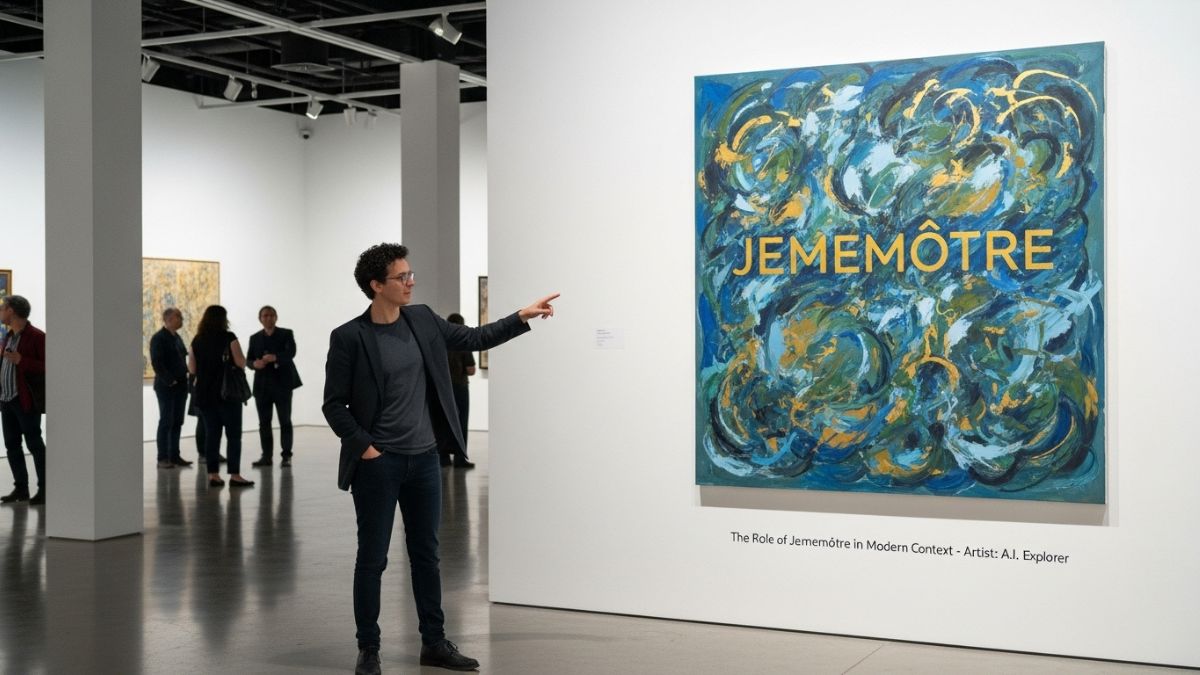ART
The Role of Jememôtre in Modern Context

Origins and Cultural Significance
The concept of Jememôtre, deeply rooted in ancient traditions, emerged from a tapestry of myths and societal needs. Originally, it served as a guiding principle within communities, symbolizing a bridge between the tangible and the ethereal. The cultural significance of Jememôtre varied widely among different civilizations, each attributing its unique symbolism and practices. In agrarian societies, Jememôtre often represented the cycle of life and seasons, central to the health and welfare of the community. Similarly, for warrior tribes, it might have been associated with valor and protection, embodying a protective spirit guiding them in times of conflict.
Evolution Through Various Eras
Over centuries, Jememôtre adapted to societal transformations, reflecting the dynamics of power, religion, and economy. During the Middle Ages, for instance, the concept evolved within feudal systems to align with prevailing religious doctrines, often merging with the dominant religious imagery. These transformations were not uniform; regions embedded their histories and values into the practice of Jememôtre, thereby altering its form and function. As societies shifted towards industrialization, Jememôtre began to lose its direct link with everyday life. Nevertheless, its essence transitioned into new formats, sometimes as allegorical tales or symbols in artworks intending to preserve its core teachings.
Impact on Traditional Societies
The pervasive influence of Jememôtre on traditional societies is undeniable. It shaped societal norms, legal systems, and artistic expressions, acting as a repository of collective identity. Traditional festivals centered on the themes of Jememôtre provided not only entertainment but reinforcement of societal structure and continuity. In community rituals, the theme of balancing natural elements around the principles of Jememôtre was pivotal, reaffirming communal solidarity and cultural longevity. By underpinning societal behavior and expectations, it fostered a shared cultural repertoire, ensuring these principles were passed down generations.
Jememôtre in the Modern World
Current Global Practices
Today, Jememôtre manifests in myriad forms across cultures, reflecting the globalization and hybridization of traditions. These modern adaptations often detach the traditional meanings from their origins, aligning them with contemporary global values such as environmental conservation, human rights, and technological advancements. For example, in major cities worldwide, Jememôtre might be celebrated through festivals focusing on ecological balance, thus recontextualizing the ancient practices in light of today’s environmental concerns. Educational programs and workshops have also adopted these themes to foster cross-cultural understanding and address global challenges collaboratively.
Influences on Contemporary Culture
In the realm of contemporary culture, Jememôtre serves as a source of inspiration and continuity. Artists, filmmakers, and writers frequently draw upon its motifs to explore timeless human concerns—identity, morality, and community. Through literature and visual arts, the narratives of Jememôtre find new audiences, transcending geographical borders and historical confines. Additionally, contemporary fashion and design incorporate elements of Jememôtre, blending traditional aesthetics with modern sensibilities to craft unique expressions of heritage and innovation. This convergence confirms the enduring relevance of Jememôtre, proving it adaptable to the shifting cultural landscape.
Cultural Importance Today
Representation in Media
The representation of Jememôtre in media underscores its cultural importance, particularly as societies navigate complex identities and global interactions. Documentaries and educational content delve into its historical origins and present-day significance, offering audiences a glimpse into its profound impact across cultures. These portrayals often amplify dialogues concerning cultural heritage, promoting a deeper understanding of its roots and transformations. Media portrayal of Jememôtre also influences its perception and appreciation worldwide, facilitating a renewed connection with traditions and fostering multicultural dialogues.
Cross-Cultural Interactions
Jememôtre provides a vehicle for cross-cultural interactions, facilitating the exchange of ideas and practices among diverse communities. Events such as international festivals and cultural symposia serve as platforms for this exchange, emphasizing shared human experiences and reinforcing social cohesion. By participating in these interactions, individuals not only celebrate diversity but also cultivate a collective responsibility towards preserving and adapting cultural heritage. Such engagements underscore the universal values inherent in Jememôtre, encouraging communities to appreciate their differences while recognizing common threads.
Challenges and Future Directions
Modernization and Adaptation
The modernization of Jememôtre presents both opportunities and challenges. On one hand, modernization encourages innovation and revitalizes interest in traditional practices by making them relevant to contemporary issues. On the other hand, it risks diluting the historical essence of Jememôtre, particularly when its commercialization overshadows the original intent and meaning. As societies strive to respect and integrate tradition within dynamic environments, a careful balance must be maintained to ensure authentic preservation while accommodating necessary change and innovation.
Preservation of Cultural Identity
Preserving the cultural identity embodied by Jememôtre is crucial in an era of rapid globalization and homogenization. Efforts should focus on educating younger generations about its significance, encouraging engagement through storytelling, artistic expressions, and digital platforms. Community-based initiatives and collaborative networks can play pivotal roles in supporting this objective by safeguarding intangible cultural heritage and promoting intercultural dialogue. Future directions should aim to bridge the gap between historical relevance and future applicability, ensuring that Jememôtre continues to enrich human experiences across time and place.

-

 FASHION3 weeks ago
FASHION3 weeks agoWhy Fashion Is Important to People: A Deep Dive Into Its Cultural, Psychological, and Social Impact
-

 BLOG1 month ago
BLOG1 month agoExploring the Revolutionary Potential of New Software 418DSG7
-

 NEWS2 days ago
NEWS2 days agoForestry Development Authority: Guardians of Our Forests
-

 HEALTH2 weeks ago
HEALTH2 weeks agoMega-Personal.net Health Archives: The Ultimate Guide to Health Information and Resources
-

 CRYPTO2 days ago
CRYPTO2 days agoCrypto30x.com: A Comprehensive Investigation Into the 30X Returns Crypto Platform
-

 CRYPTO1 week ago
CRYPTO1 week agoLessInvest.com Crypto: A Comprehensive Guide to Smart Cryptocurrency Investing
-

 CRYPTO1 day ago
CRYPTO1 day agoWhich Crypto Has 1000x Potential? A 2025 Investor’s Deep Dive into the Next Crypto Explosion
-

 NEWS2 days ago
NEWS2 days agoTecnoregio News: Your Ultimate Guide to Innovation, Industry Updates, and Regional Technology Insights